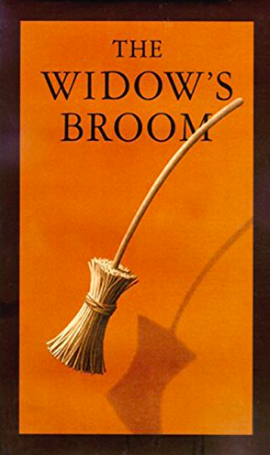The Widow’s Broom
Book Module Navigation
Summary
The Widow’s Broom considers questions about bravery, tolerance, and fear.
A lonely widow named Minna Shaw finds a witch in her garden. Minna takes care of the witch until she heals. The witch leaves and abandons her broom, which she thinks is no longer magic. Minna keeps the broom and uses it for her house chores. One day the broom sweeps the floor on its own. Minna’s neighbors believe the broom is wicked and dangerous. One day, after being continually taunted by two children, the broom gives the boys a beating, which the neighbors use as proof of its evil spirit. They then attempt to get rid of the broom.
Read aloud video by Nhu-Nguyen Tran
Guidelines for Philosophical Discussion
The philosophical context of The Widow’s Broom relates to ethics and the treatment of people. The broom and the witches can be seen as a group of people that are strange, different, and to be feared by the townspeople. The way people treat the broom is related to how the people treat the whole population of witches. The children taunt the broom just like a bully would taunt a child on the playground who may be of a different race, sexuality, or even just because they have glasses. Minna can be seen as someone who has good morals and brings the witch into her home despite vast differences between the two people. Minna teaches us that the human population is generally good-hearted and differences that may appear strange and scary at first aren’t always the case when one begins to learn more. A lack of understanding can create walls and boundaries that aren’t necessary when the misunderstood may have more in common than it would appear at first.
Questions for Philosophical Discussion
Before Reading
- What do the title and the cover of the book suggest about the story?
- What is a widow?
During the Reading
- If there was someone like a witch injured in your yard, what would you do? Why?
- What happened to the dog?
- Did the neighbors really burn the real magic broom?
- How did Minna scare neighbors away?
Bravery
- Was it brave of Minna to help the witch?
- What makes someone brave?
Tolerance
- Why do you think the townspeople did not accept the broom?
- Why do you think Minna accepts the broom into her life, even though it came from a witch?
- Would you not accept someone or something just because they were different?
- Can you think of a situation where the lack of acceptance caused suffering?
Fear
- Why do you think the rest of the neighbors feared the broom?
- Was there a time where you were scared of something that was different or unusual?
- Can you think of other situations where people feared something they did not understand?
- Should they have feared the broom? Why or why not?
Original questions and guidelines for philosophical discussion by Dale Bailey and Kayla Lavallee archived here. Edited June 2020 by The Janet Prindle Institute for Ethics.
Find tips for leading a philosophical discussion on our Resources page.







